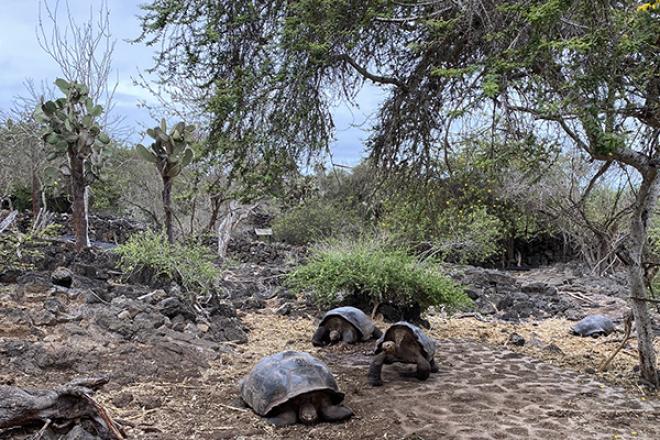Protecting a singular ecosystem in the Galápagos
Michael Weisberg, the Bess W. Heyman President's Distinguished Professor of Philosophy, students, and Ecuador's Ambassador to the United States reflect on the momentous expansion of the Galápagos Marine Reserve.
By Blake Cole

In January 2022, the Galápagos Marine Reserve was expanded by 60,000 square kilometers, bringing the total area to 198,000 square kilometers. Created in 1998, the space is home to one of the most diverse marine ecosystems in existence, with species ranging from whale sharks to Pacific Green Turtles to Galápagos penguins.
The reserve is also unique because it brings together the governments of Ecuador, Costa Rica, Panama, and Colombia in an allied effort to stave off illegal fishing practices, such as shark finning. It’s a remarkable achievement says Michael Weisberg, the Bess W. Heyman President’s Distinguished Professor of Philosophy in the School of Arts & Sciences, who has been involved in research and activism in the islands for much of his career.
“These are places that are unique in the world and we’re losing them because of climate change and overfishing,” says Weisberg, author of “Galápagos: Life in Motion.” “And it’s easy to say that we prioritize these things, but to actually try to do it shows real leadership.”
Galápagos Education and Research Alliance, or GERA, which Weisberg co-directs, aims to support Galápagos communities in protecting biodiversity, building resilience against climate change, and promoting the health of humans and non-humans alike. GERA brings together an alliance of the Galápagos community with faculty and students from across Penn, along with partners at Villanova University, Virginia Tech, and the University of Cincinnati.
The initiative’s work focuses on addressing the most pressing issues facing the islands: How can population growth continue while preserving the biodiversity for which Galápagos is justly famous? How can these communities prepare for the coming climate emergency? And how can the tools of community science be used to increase civic engagement with these issues and empower the local community to protect its home?
GERA approaches these goals on multiple fronts, including green business consulting, community outreach, public health, and urban development. LAVA, short for Laboratorio para Apreciar la Vida y el Ambiente, is a series of community science initiatives that address issues at the intersection of ecology, conservation, and education.
For Weisberg and his students, it’s all about forging ahead with research and community outreach, and future expansion only provides more fertile ground for discovery. “I think prioritizing large areas of ocean that are far from where people live is politically very difficult, but you have to do it, or you just end up just protecting the places that are highly visible,” says Weisberg.
Read more at OMNIA.